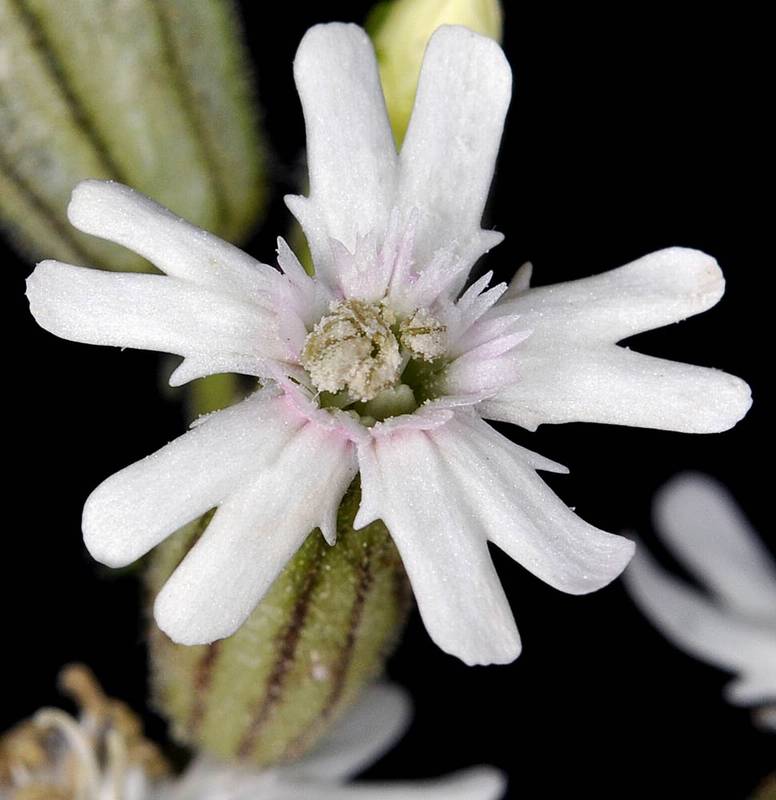Silene stellata
Silene parryi
Parry's, Parry's silene
Leaves mostly basal, linear-oblanceolate, 3-8 cm. long and 4-10 mm. broad, long-petiolate;
cauline leaves 2-3 pairs, narrower but not shorter than the basal leaves.
Flowers few, in a tight terminal cluster with 1-2 lower on the stem;
calyx 5-lobed, tubular, inflating in fruit, 12-16 mm. long, glandular-hairy, with 10 prominent nerves;
petals 5, white, or greenish or purplish tinged; the claw about 11 mm. long, broadened above;
blade about 5 mm. long, bi-lobed to mid-length, each margin with a shorter lateral tooth;
blade appendages 2, 1.5-2 mm. long and broad;
ovary stalk 3 mm. long;
stamens 10;
styles usually 3, exerted.
Capsule 1-celled.
Silene stellata
Silene parryi
Widely distributed in the mountainous areas in Washington; British Columbia to Oregon, east to Alberta, Montana, and Wyoming.


